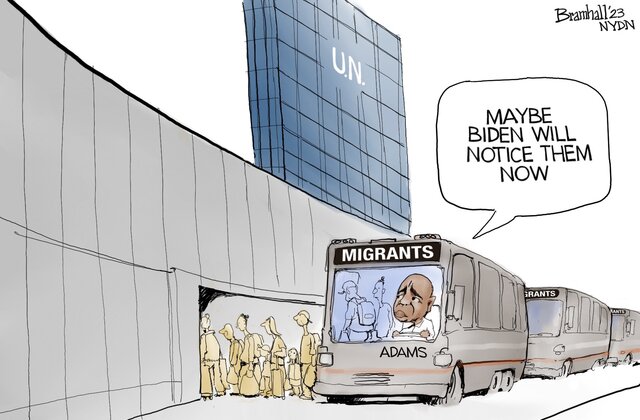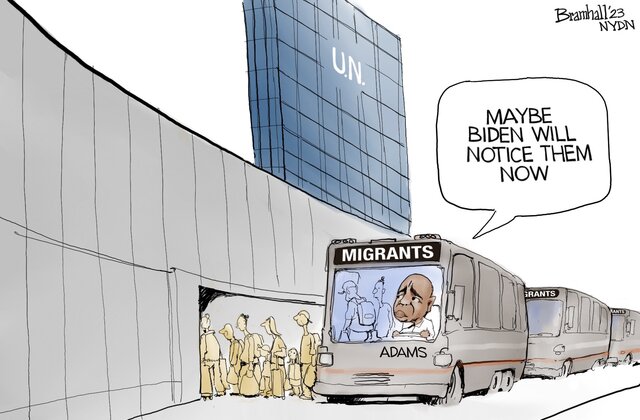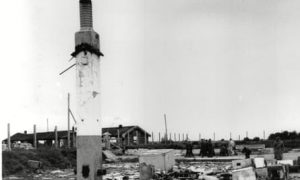
Cet encart de quelques lignes ayant pour thème « la justice » se propage sur le web, nous avons projeté de vous le livrer ici.
Son titre (A Grandmother Seeks Justice for Native Americans After Thousands of Unsolved Deaths, Disappearances) est parlant.
Présenté sous le nom «d’anonymat
», le rédacteur est positivement connu.
Le post peut en conséquence être pris au sérieux.
L’éditorial a été divulgué à une date indiquée 2023-09-20 23:04:00.
L’article dont il s’agit :
HARDIN, Mont. (AP) — Yolanda Fraser is back near a ragged chain-link fence, blinking through tears as she tidies up flowers and ribbons and a pinwheel twirls in the breeze at a makeshift roadside memorial in a small Montana town.
This is where the badly decomposed body of her granddaughter Kaysera Stops Pretty Places was found a few days after the 18-year-old went missing from a Native American reservation border town.
Four years later, there are still no answers about how the Native American teenager was killed. No named suspects. No arrests.
Fraser’s grief is a common tale among Native Americans whose loved ones went missing, and she’s turned her fight for justice into a leading role with other families working to highlight missing and slain Indigenous peoples’ cases across the U.S. Despite some early success from a new U.S. government program aimed at the problem, most cases remain unsolved and federal officials have closed more than 300 potential cases due to jurisdictional conflicts and other issues.
As she told her granddaughter’s story, Fraser pushed past tears and began listing other names among the thousands of disappearances and violent deaths of Native Americans and Alaska Natives.
Political Cartoons

“My nephew Victor, my nephew Dane Fisher, my close relative Christy Rose Woodenthigh — and it just goes on and on,” Fraser said. “It just became obvious that there’s a pattern to all of it. There’s a line between these Native lives and other lives. … But our voice is getting louder. People are listening.”
U.S. officials share frustration over the unsolved cases, which critics say reflects racial injustice, particularly when compared to the media frenzy that erupts when a white woman goes missing.
“The patchwork of jurisdictions makes it so hard to get started on these investigations. And when you lose time, your chances of solving these cases goes down,” said Assistant Secretary of Interior Bryan Newland. “It’s frustrating for everybody. »
Federal law enforcement has jurisdiction over most Native American reservations, which often don’t have their own police force yet experience people going missing at several times the rate of the rest of the nation. That’s set against a backdrop of historical injustices that include massacres of Native Americans by U.S. troops, forced assimilation of Native children in abusive boarding schools and the removal of many tribes from their traditional lands.
Members of several victims’ families joined Fraser recently to dedicate a billboard honoring victims along Interstate 90 just outside the town of Hardin where Stops Pretty Places died. The billboard lists four dozen missing and slain people and other victims on the Northern Cheyenne and Crow reservations in southeastern Montana.
As the names were recited over a loudspeaker some relatives of victims cried as they leaned into one another.
“When we’re divided we’re not strong at all, but when we’re together we’re powerful,” said Blossom Old Bull, whose son was killed in a car crash at 17 while being pursued by police who the family blames for his death.
With backing from nonprofit groups and her family, Fraser hopes to erect similar billboards near reservations across the U.S. She wants to highlight the names behind crime statistics and for local officials to be confronted with the victims within their community.
Stops Pretty Places died in Big Horn County, just outside the Crow Indian Reservation and about 55 miles (89 kilometers) from Muddy Creek, the Northern Cheyenne Reservation community where Fraser largely raised her. She’d been missing for several days when her body was found at the edge of a fenced-in yard next to a busy road, one door down from where she’d last been seen with some friends.
For years, the family’s pleas for an outside investigation went unanswered. This spring they learned county authorities had finally agreed to federal assistance. Agents from the Bureau of Indian Affairs’ Missing and Murdered Unit are now reexamining the case.
The unit was formed in 2021 by U.S. Interior Secretary Deb Haaland amid rising criticism over the mishandling of crimes involving Native Americans. Its agents have received 845 case referrals, primarily from victims’ families, including 117 that were solved and 372 still under review or being investigated.
More than 350 were closed with no resolution, often because of jurisdictional issues that prevent federal agents from working off-reservation without an invitation from local authorities.
The Missing and Murdered Unit has only 15 agents, with plans to more than double that figure, officials said. Its caseload covers a small fraction of an estimated 4,200 unsolved cases nationwide among American Indians and Alaska Natives, with the victims ranging in age from toddlers to the elderly. Indigenous people account for 3.5% of missing persons in the U.S. — more than three times the percentage in the overall population, according to federal data.
Violent crimes reported against Native Americans more than tripled between 2010 and 2020, the Congressional Research Service reported in July, adding that improved reporting could have contributed to the increase.
“All these cases, they’re really different but it all has to do with the same thing — the lack of law enforcement on reservations. the jurisdictional problems,” said Melissa Lonebear, a member of the Northern Cheyenne Tribal Council.
Adding to the challenges is the lack of reliable data on crime in Native communities. That’s beginning to change. In New Mexico, the FBI has compiled a database of about 200 missing Native Americans. And a first-of-its-kind report released in Alaska last month listed 280 missing Alaska Natives and American Indians.
Requests for federal intervention have poured into the Missing and Murdered Unit in recent months as President Joe Biden’s administration held a series of field hearings to solicit testimony about the crisis from tribal members, families of victims and survivors.
People travelled hundreds of miles including from Washington state and South Dakota to attend the hearing in Billings, Montana, where they erected oversized photos of victims at the back of a convention center ballroom. They told the commission of loved ones who had been shot in the back, killed in their own home or gone missing and never seen again.
Grace Bulltail, a member of the commission and one of Stops Pretty Places’ aunts, said it’s hard for many native families to step forward.
“When we’re speaking, we know that they don’t care. We know they’re just waiting for us to stop talking. They’ve heard it before,” Bulltail said, adding this is why some families remain silent. “But when there is such an injustice and disregard for our lives, we have to speak out.”
The hearing also acted as a networking event, providing families the opportunity to trade tips on pushing investigations forward and bringing more attention to this crisis. Fraser traces the rise of her own advocacy to the brutal 2015 killing of Hannah Harris, whose partially clothed body was found on the Northern Cheyenne Reservation rodeo grounds near the town of Lame Deer days after she disappeared.
Tribal members said the search for Harris was botched by authorities, allowing her body to become so badly decomposed it prevented prosecutors from pursuing murder charges against one of the suspects in the case. Harris’ birthday, May 5, was later designated by Congress as the National Day of Awareness for Missing and Murdered Native Women and Girls, which has since been expanded to include all missing and murdered Indigenous peoples.
When Stops Pretty Places died, Fraser reached out to Harris’ mother – Fraser’s cousin — for guidance. As the case dragged on their extended family began organizing rallies, letter-writing campaigns and other actions to spur further investigations.
“We’re not going to stop. They get tired of us sometimes, but that’s OK,” Fraser said. “We want to make noise.”
Copyright 2023 The Associated Press. All rights reserved. This material may not be published, broadcast, rewritten or redistributed.
Livres sur un propos proche:
Contribution à l’étude de la pénalisation,Le livre .
Le banquier de Lucifer,Ouvrage . A emprunter en bibliothèque.
Parlons justice en 30 questions,Clicker Ici . Disponible dans toutes les bonnes bibliothèques de votre département.


